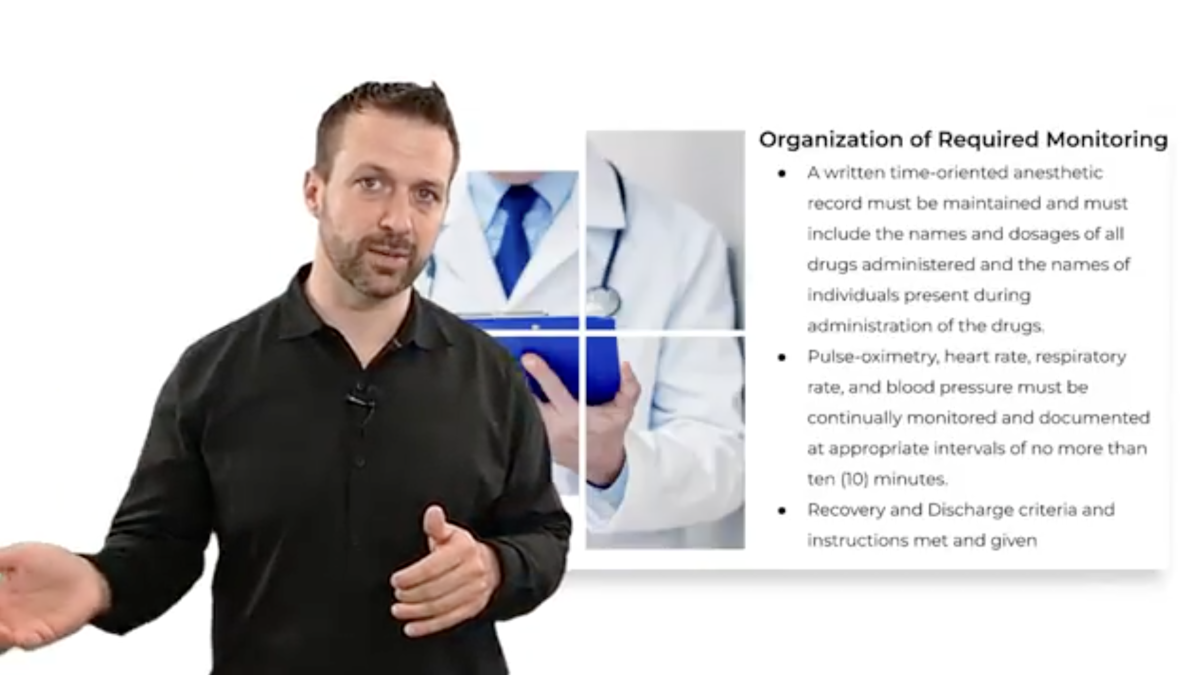Dental Sedation Mastery: Essential Documentation and Safety Protocols for Dental Professionals

Refine your dental sedation practices with actionable strategies for safety, documentation, and patient care from preparation to recovery.
Mastering Dental Sedation: Documentation, Risk Management, and Safety Protocols
Dental sedation is a cornerstone of patient care, particularly for individuals with high levels of anxiety, special needs, or complex procedures. However, sedation requires more than technical proficiency—it demands meticulous preparation, active monitoring, and thorough documentation at every stage.
This blog will guide you through the critical aspects of dental sedation, providing practical strategies for improving documentation, streamlining pre-sedation preparation, and enhancing procedural safety. Whether you are new to sedation or a seasoned professional, these insights will help ensure that your sedation practices meet the highest standards.
Comprehensive Documentation: The Key to Safe Sedation
Documentation is the backbone of safe sedation practices. A detailed and well-maintained record is not only a regulatory requirement but also a critical safeguard for patient safety and audit readiness.
Key Elements of Documentation:
- Baseline Evaluation: The process begins with recording the patient’s ASA (American Society of Anesthesiologists) classification, medical history, and current medications. High-risk patients (ASA 3 or 4) should undergo further consultation with a specialist, and these interactions must be documented.
- Informed Consent: This must include a written acknowledgment of the sedatives to be used, potential risks such as cardiac arrest or brain injury, and instructions such as NPO (nothing by mouth) guidelines. Guardians should have the opportunity to ask questions and withdraw consent if needed.
Best Practices for Documentation:
- Avoid leaving any section of the sedation record blank. Mark “N/A” or “within normal limits” where appropriate to prevent confusion during audits.
- Keep a clear timeline of the procedure, including sedation start and stop times, drug administration, and vital sign recordings.
A thorough documentation process ensures clarity, reduces liability, and reinforces trust between you and your patients.
Pre-Sedation Protocols: Establishing Safety Before Sedation
Preparation is critical for minimizing risks associated with dental sedation. A comprehensive pre-sedation protocol ensures that both the team and the patient are ready.
Key Steps in Pre-Sedation Preparation:
- Equipment Checks: Verify that oxygen tanks are full, emergency medications are accessible, and nitrous oxide delivery systems are functioning correctly.
- Baseline Vitals: Record the patient’s blood pressure, respiratory rate, and oxygen saturation to establish a reference point for monitoring.
- Patient-Specific Considerations: For pediatric patients, assess factors like BMI, airway size, and behavioral tendencies. These evaluations help tailor sedation plans and anticipate challenges.
Pre-sedation preparation isn’t just about logistics—it’s about fostering confidence and ensuring a smooth, safe procedure for both the patient and the team.
Active Monitoring During Sedation
Continuous monitoring is a cornerstone of safe sedation practices. During the procedure, practitioners must be alert to changes in the patient’s condition and prepared to respond immediately.
What to Monitor:
- Oxygen saturation, respiratory rate, heart rate, and blood pressure at regular intervals.
- Physical signs, such as skin color and chest movement, which can indicate respiratory or circulatory distress.
- The patient’s level of consciousness and responsiveness to verbal cues.
Best Practices for Monitoring:
- Utilize advanced monitoring systems to capture real-time data, but conduct manual checks to ensure nothing is missed.
- Maintain verbal communication with the patient. Even minimally responsive patients provide valuable feedback that helps assess sedation depth.
Preparedness for emergencies is equally essential. Team members should undergo regular training to manage sedation-related complications, and all emergency equipment should be easily accessible. A coordinated, well-prepared team is the best defense against adverse outcomes.
Recovery and Discharge: Ensuring Patient Safety Post-Sedation
The recovery phase is a critical time when complications can arise, making vigilant observation crucial. Patients must meet specific discharge criteria before leaving the facility.
Criteria for Discharge:
- The patient can respond to verbal commands.
- Vitals, such as heart rate and oxygen saturation, are stable.
- The patient can sit or stand unassisted.
Supporting Recovery at Home:
Caregivers should receive detailed post-sedation instructions, including dietary recommendations, signs of potential complications, and emergency contact information. This ensures the patient continues to recover safely after leaving the dental office.
If a reversal agent is administered, extended monitoring is mandatory to rule out resedation risks. Detailed documentation of the reversal process, patient response, and discharge timeline ensures compliance with safety standards.
Elevating Safety in Dental Sedation
Dental sedation is a vital tool for improving patient care, but it demands diligence and precision at every step. From comprehensive documentation to robust pre-sedation preparation and vigilant monitoring, following best practices is essential for ensuring safety and compliance.
By adopting these strategies, dental professionals can enhance patient outcomes, build trust, and maintain the highest standards of care.
Take your sedation expertise to the next level by enrolling in the Pediatric Endorsement Sedation Course. Designed for dental professionals, this comprehensive course offers 16 CE credits and covers essential topics such as documentation, risk management, and safety protocols.
Among the course’s expert instructors is Dr. Jeff Gregerson, a Board-Certified Pediatric Dentist with over 14 years of experience. Dr. Gregerson completed his D.M.D. at Temple University and advanced training in pediatric dentistry at the University of Pennsylvania and the Children’s Hospital of Philadelphia. This one of his modules focuses on pre- and post-sedation procedures, offering actionable insights to improve safety and compliance in your practice.
Don’t miss this opportunity to refine your skills and provide safer care for your patients. Visit our website to enroll today and elevate your sedation expertise.
 Sani Leauanae
Sani Leauanae 